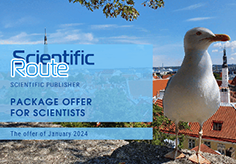Синтез Ti-Si и Ti-Si-N покрытий конденсациейфильтрованной вакуумно-дуговой плазмы
DOI:
https://doi.org/10.15587/1729-4061.2009.3178Abstract
Исследовалось осаждение Ti-Si и Ti-Si-N покрытий, синтезируемых с применением вакуумно-дугового источника фильтрованной плазмы с расходуемым титан-кремниевым катодом. Толщина плёнок и содержание компонентов в них определялись методом рентгено-флюоресцентного анализа. Установлено, что путём регулировки параметров процесса осаждения (давления рабочего газа в реакционном объёме установки, отрицательного потенциала смещения на подложке, напряжённости и формы распределения магнитных полей в плазменном источнике) концентрацию кремния в конденсате можно изменять в широких пределах – от нуля до максимального значения, определяемого его содержанием в катоде
References
- И.И. Аксёнов, Д.С. Аксёнов, В.В. Васильев, А.А. Лучанинов, Е.Н. Решетняк, В.Е. Стрельницкий. Двухкатодный источник фильтрованной вакуумно-дуговой плазмы// ВАНТ, серия: ”Вакуум, чистые металлы, сверхпроводники”, 2008, №1, с.136 − 141.
- A. Anders. Atomic scale heating in cathodic arc plasma deposition// Appl. Phys. Let., 2002, vol.80, pp.1100 − 1102.
- Л.И. Майселл. Нанесение тонких плёнок катодным распылением// Физика тонких плёнок, ред. Г. Хасс и Р.Э. Тун. М. «Мир», 1968, с.59 − 134.
- И.И. Аксёнов. Вакуумная дуга в эрозионных источниках плазмы. Харьков: ННЦ ХФТИ, 2005, 212с.
Downloads
Published
How to Cite
Issue
Section
License
Copyright (c) 2014 Д. С. Аксёнов, И. И. Аксёнов, А. А. Лучанинов, Е. Н. Решетняк, В. Е. Стрельницкий

This work is licensed under a Creative Commons Attribution 4.0 International License.
The consolidation and conditions for the transfer of copyright (identification of authorship) is carried out in the License Agreement. In particular, the authors reserve the right to the authorship of their manuscript and transfer the first publication of this work to the journal under the terms of the Creative Commons CC BY license. At the same time, they have the right to conclude on their own additional agreements concerning the non-exclusive distribution of the work in the form in which it was published by this journal, but provided that the link to the first publication of the article in this journal is preserved.
A license agreement is a document in which the author warrants that he/she owns all copyright for the work (manuscript, article, etc.).
The authors, signing the License Agreement with TECHNOLOGY CENTER PC, have all rights to the further use of their work, provided that they link to our edition in which the work was published.
According to the terms of the License Agreement, the Publisher TECHNOLOGY CENTER PC does not take away your copyrights and receives permission from the authors to use and dissemination of the publication through the world's scientific resources (own electronic resources, scientometric databases, repositories, libraries, etc.).
In the absence of a signed License Agreement or in the absence of this agreement of identifiers allowing to identify the identity of the author, the editors have no right to work with the manuscript.
It is important to remember that there is another type of agreement between authors and publishers – when copyright is transferred from the authors to the publisher. In this case, the authors lose ownership of their work and may not use it in any way.








